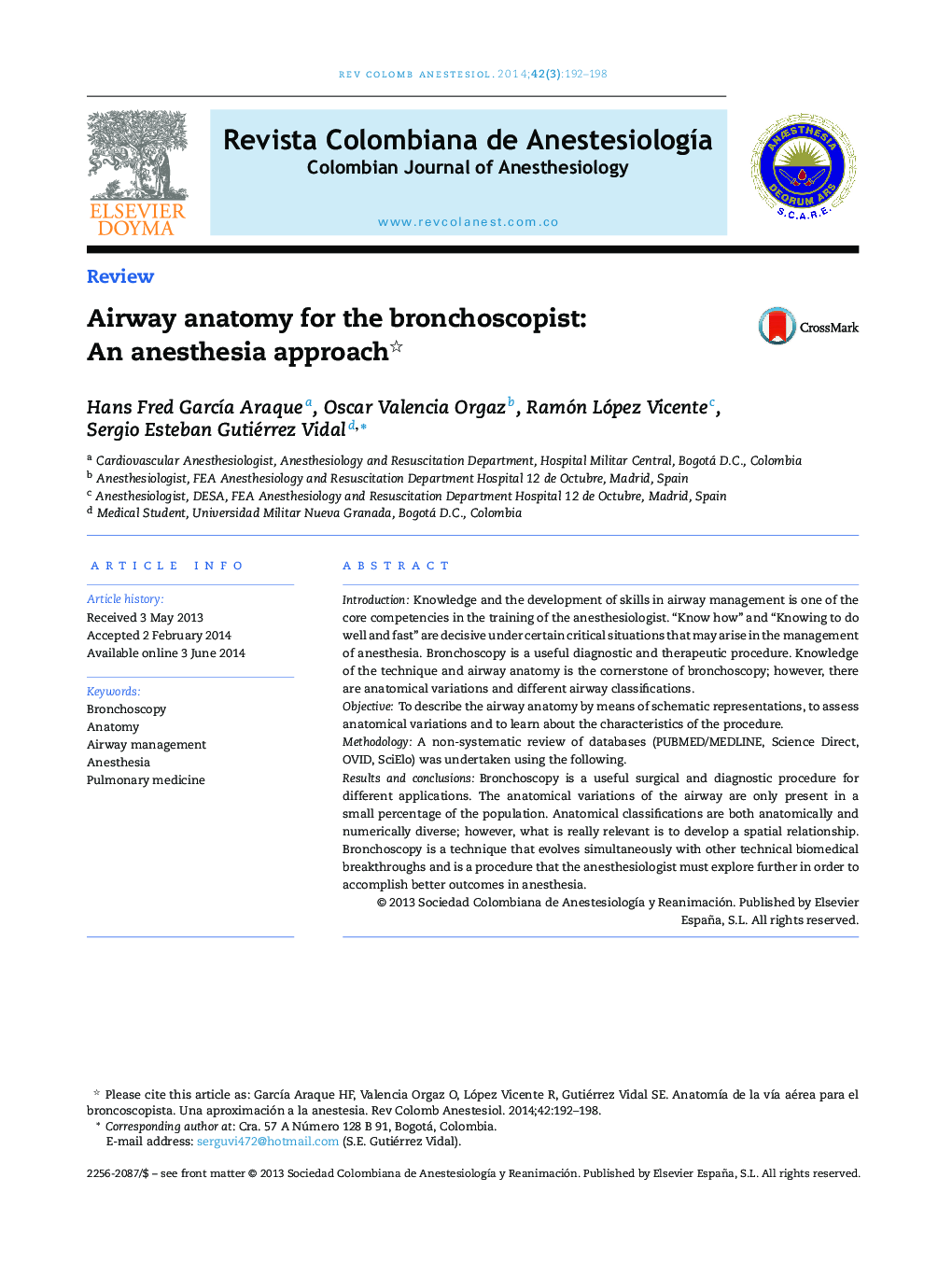| کد مقاله | کد نشریه | سال انتشار | مقاله انگلیسی | نسخه تمام متن |
|---|---|---|---|---|
| 2755927 | 1567389 | 2014 | 7 صفحه PDF | دانلود رایگان |
IntroductionKnowledge and the development of skills in airway management is one of the core competencies in the training of the anesthesiologist. “Know how” and “Knowing to do well and fast” are decisive under certain critical situations that may arise in the management of anesthesia. Bronchoscopy is a useful diagnostic and therapeutic procedure. Knowledge of the technique and airway anatomy is the cornerstone of bronchoscopy; however, there are anatomical variations and different airway classifications.ObjectiveTo describe the airway anatomy by means of schematic representations, to assess anatomical variations and to learn about the characteristics of the procedure.MethodologyA non-systematic review of databases (PUBMED/MEDLINE, Science Direct, OVID, SciElo) was undertaken using the following.Results and conclusionsBronchoscopy is a useful surgical and diagnostic procedure for different applications. The anatomical variations of the airway are only present in a small percentage of the population. Anatomical classifications are both anatomically and numerically diverse; however, what is really relevant is to develop a spatial relationship. Bronchoscopy is a technique that evolves simultaneously with other technical biomedical breakthroughs and is a procedure that the anesthesiologist must explore further in order to accomplish better outcomes in anesthesia.
ResumenIntroducciónEl conocimiento y desarrollo de habilidades en el manejo de la vía aérea es una de las competencias importantes en la formación del anestesiólogo; el “saber” y el “saber hacer bien y rápido” son determinantes en algunas situaciones críticas a las que se puede enfrentar durante el manejo anestésico. La broncoscopia es un procedimiento útiltanto diagnóstico como terapéutico. El conocimiento de la técnica y de la anatomía de la vía aérea constituye el pilar de la broncoscopia, encontrando diferentes variaciones anatómicas y clasificaciones de la vía aérea.ObjetivoDescribir la anatomía de la vía aérea a través de esquemas, evaluar variaciones anatómicas y conocer características propias del procedimiento.MetodologíaCon las palabras clave “Bronchoscopy”, “Anatomy”, “Airway” y “Anesthesia” se realizó una revisión no sistemática en bases de datos (PUBMED/MEDLINE, Science Direct, OVID, SciElo).Resultados y conclusionesLa broncoscopia es un procedimiento útil en el plano quirúrgico y diagnóstico, siendo utilizado en distintos procedimientos. Las variaciones anatómicas de la vía aérea se presentan en un porcentaje pequeño de la población. Las clasificaciones anatómicas son diversas tanto anatómica como numéricamente; sin embargo, lo relevante es desarrollar una relación espacial. La broncoscopia es una técnica que va en desarrollo paralelo a otros avances de la tecnología biomédica, es un procedimiento del cual el anestesiólogo debe investigar más con el fin de generar mejores efectos en el campo de la anestesiología.
Journal: Colombian Journal of Anesthesiology - Volume 42, Issue 3, July–September 2014, Pages 192–198
